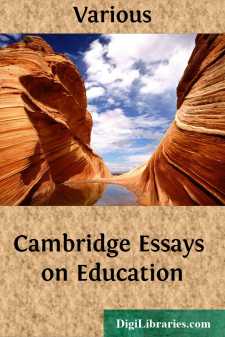Categories
- Antiques & Collectibles 13
- Architecture 36
- Art 48
- Bibles 22
- Biography & Autobiography 813
- Body, Mind & Spirit 142
- Business & Economics 28
- Children's Books 17
- Children's Fiction 14
- Computers 4
- Cooking 94
- Crafts & Hobbies 4
- Drama 346
- Education 46
- Family & Relationships 57
- Fiction 11829
- Games 19
- Gardening 17
- Health & Fitness 34
- History 1377
- House & Home 1
- Humor 147
- Juvenile Fiction 1873
- Juvenile Nonfiction 202
- Language Arts & Disciplines 88
- Law 16
- Literary Collections 686
- Literary Criticism 179
- Mathematics 13
- Medical 41
- Music 40
- Nature 179
- Non-Classifiable 1768
- Performing Arts 7
- Periodicals 1453
- Philosophy 64
- Photography 2
- Poetry 896
- Political Science 203
- Psychology 42
- Reference 154
- Religion 513
- Science 126
- Self-Help 84
- Social Science 81
- Sports & Recreation 34
- Study Aids 3
- Technology & Engineering 59
- Transportation 23
- Travel 463
- True Crime 29
The Atlantic Monthly, Volume 10, No. 60, October, 1862
by: Various
Categories:
Description:
Excerpt
AUTUMNAL TINTS.
Europeans coming to America are surprised by the brilliancy of our autumnal foliage. There is no account of such a phenomenon in English poetry, because the trees acquire but few bright colors there. The most that Thomson says on this subject in his "Autumn" is contained in the lines,вÐâ
"But see the fading many-colored woods,
Shade deepening over shade, the country round
Imbrown; a crowded umbrage, dusk and dun,
Of every hue, from wan declining green to sooty dark":вÐâ
and in the line in which he speaks of
"Autumn beaming o'er the yellow woods."
The autumnal change of our woods has not made a deep impression on our own literature yet. October has hardly tinged our poetry.
A great many, who have spent their lives in cities, and have never chanced to come into the country at this season, have never seen this, the flower, or rather the ripe fruit, of the year. I remember riding with one such citizen, who, though a fortnight too late for the most brilliant tints, was taken by surprise, and would not believe that there had been any brighter. He had never heard of this phenomenon before. Not only many in our towns have never witnessed it, but it is scarcely remembered by the majority from year to year.
Most appear to confound changed leaves with withered ones, as if they were to confound ripe apples with rotten ones. I think that the change to some higher color in a leaf is an evidence that it has arrived at a late and perfect maturity, answering to the maturity of fruits. It is generally the lowest and oldest leaves which change first. But as the perfect winged and usually bright-colored insect is short-lived, so the leaves ripen but to fall.
Generally, every fruit, on ripening, and just before it falls, when it commences a more independent and individual existence, requiring less nourishment from any source, and that not so much from the earth through its stem as from the sun and air, acquires a bright tint. So do leaves. The physiologist says it is "due to an increased absorption of oxygen." That is the scientific account of the matter,вÐâonly a reassertion of the fact. But I am more interested in the rosy cheek than I am to know what particular diet the maiden fed on. The very forest and herbage, the pellicle of the earth, must acquire a bright color, an evidence of its ripeness,вÐâas if the globe itself were a fruit on its stem, with ever a cheek toward the sun.
Flowers are but colored leaves, fruits but ripe ones. The edible part of most fruits is, as the physiologist says, "the parenchyma or fleshy tissue of the leaf" of which they are formed.
Our appetites have commonly confined our views of ripeness and its phenomena, color, mellowness, and perfectness, to the fruits which we eat, and we are wont to forget that an immense harvest which we do not eat, hardly use at all, is annually ripened by Nature. At our annual Cattle Shows and Horticultural Exhibitions, we make, as we think, a great show of fair fruits, destined, however, to a rather ignoble end, fruits not valued for their beauty chiefly....












